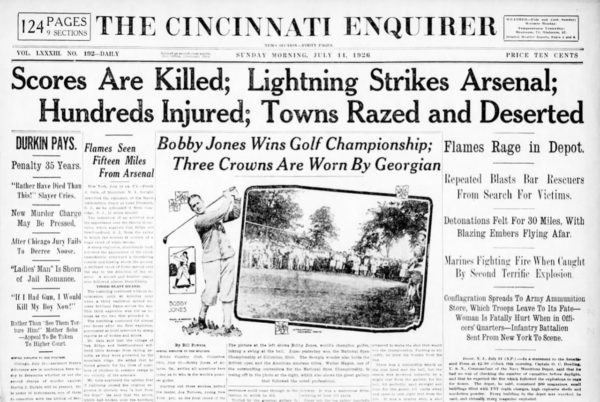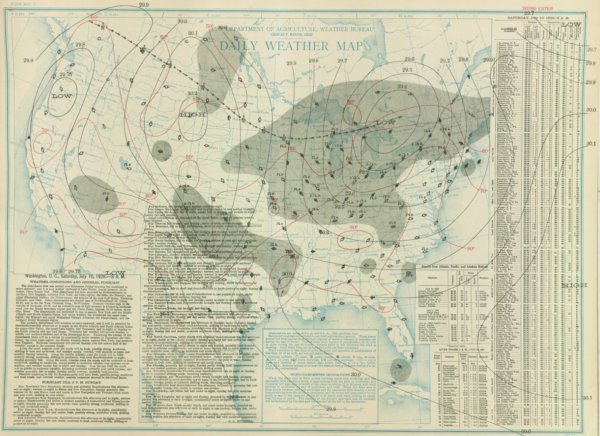July 10, 1926 – Lightning Causes Killer Blasts
Shortly after 5PM on July 10, 1926, a storm was passing over the town of Lake Denmark in northern New Jersey. An unexpected lightning bolt struck a building at the US Navy Ammunition Depot and caused a huge series of explosions. All buildings within a half-mile radius were completely destroyed due to the massive blasts from all of the explosive weaponry stored at the depot.
The depot contained 200 magazines, TNT depth charges, high explosive shells and smokeless powder. A statement taken from a US Navy Commandant of the Navy Munitions Depot said that “Every building in the depot was wrecked, and virtually every magazine exploded.”
Debris from the explosions fell as far as 22 miles away from the blast site, which included pieces of steel and concrete, along with flaming timbers and ashes. The explosions could be felt for 30 miles around the depot. The towns of Mount Hope and Hibernia were reported to be completely leveled.
One person’s statement said, “A bolt from the blue…” caused the explosion. He goes on to explain that the storm had started to dissipate over the community, and the only action happening was a gentle rain. The skies back to the west were clearing rapidly, and that’s when the first blast occurred.
The weather that they were experiencing in New Jersey that day was much like what we experience in summertime here in Central Alabama. It was hot and muggy, as the reading taken at 8AM just a few miles away in New York City was 80 degrees. There was an unstable airmass in place and the Weather Bureau said that northern New Jersey could expect thunderstorms during the afternoon. A cold front was approaching and gave the needed lift for storms to develop.
When everything had settled down, a total of 16 people were killed and dozens more were injured. Damage estimates were up in the 70 million dollar range. This explosion ultimately let to safety standards being developed to prevent future catastrophes caused by lightning.
Category: ALL POSTS, Met 101/Weather History



















